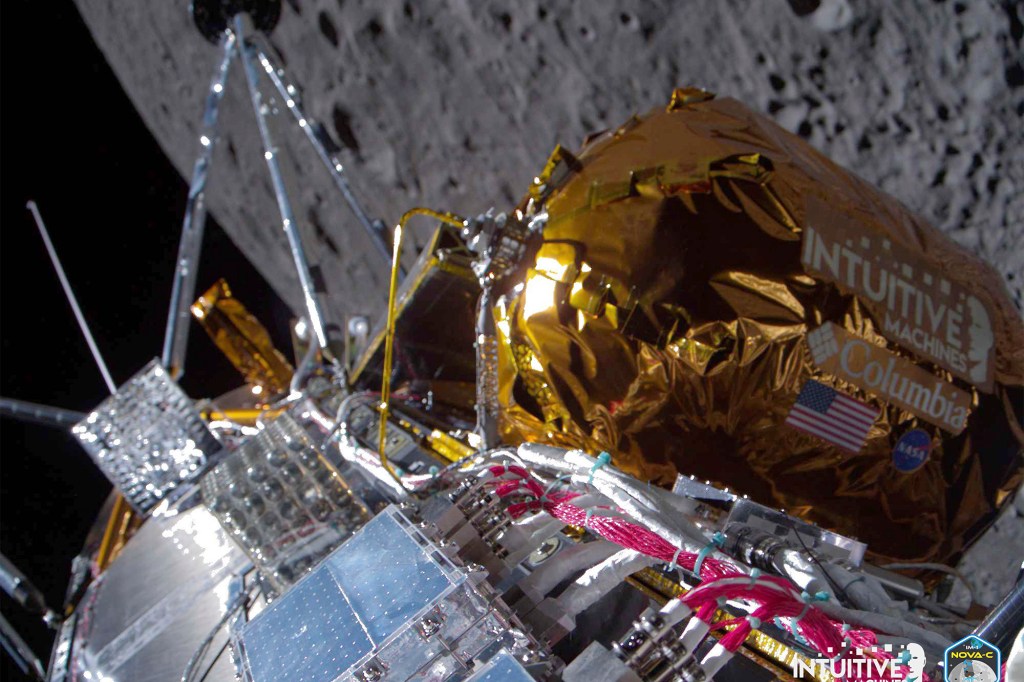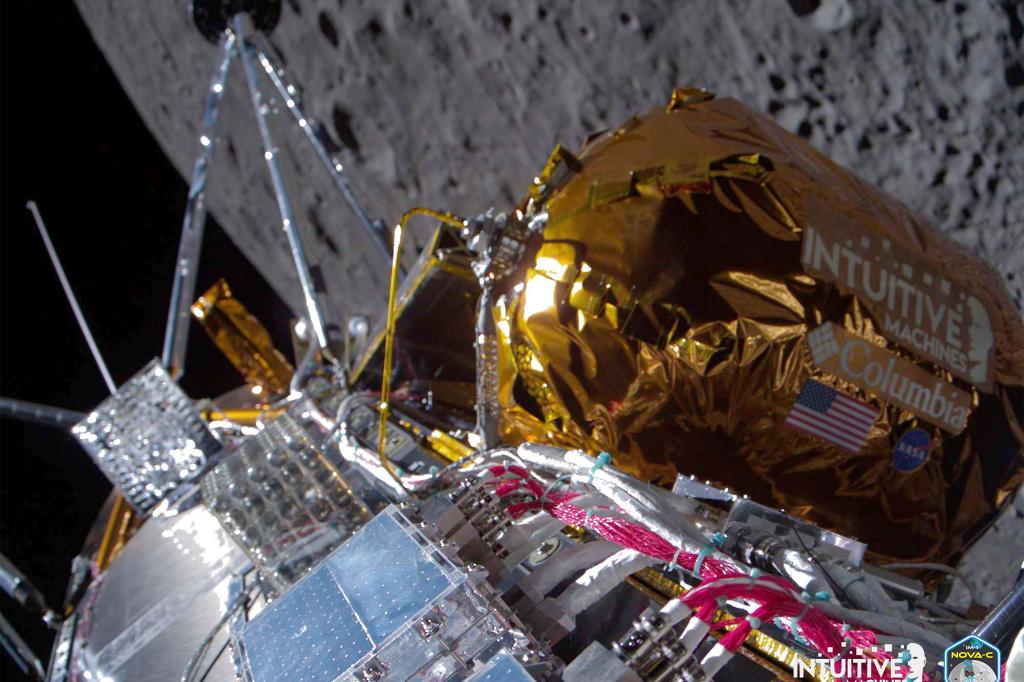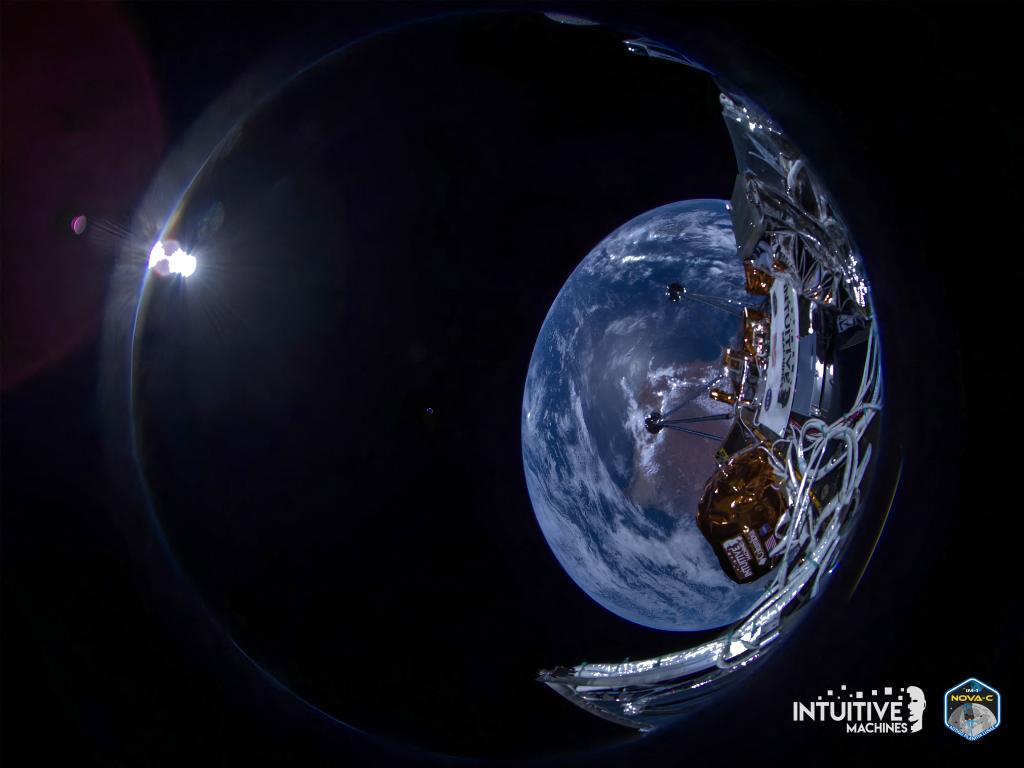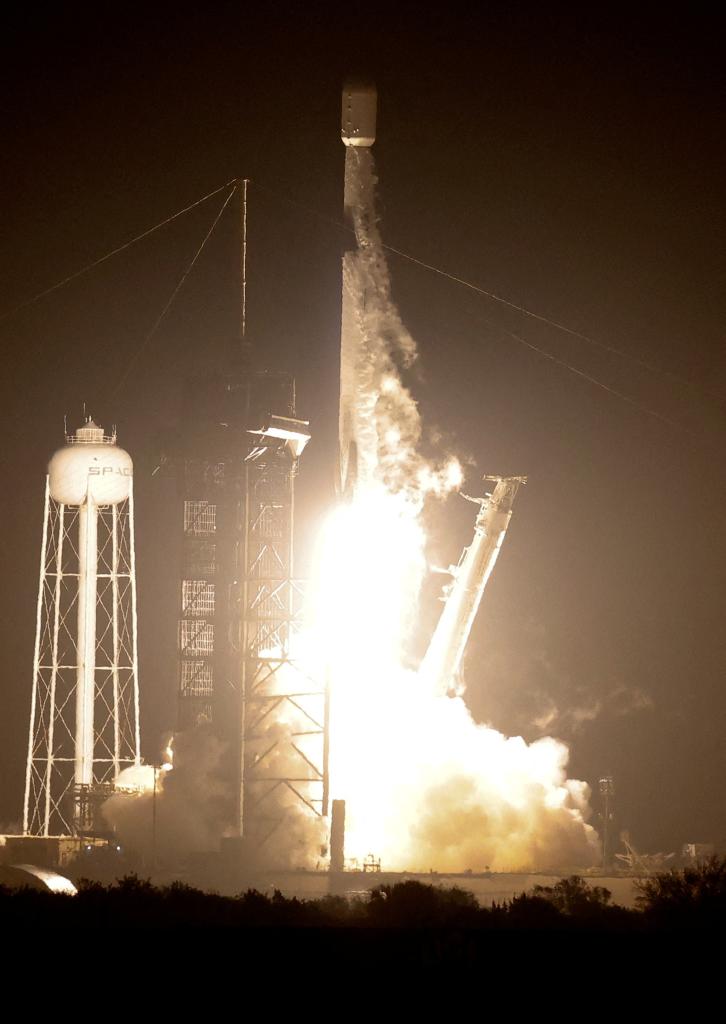Private US lunar lander Odysseus touches down on the moon for first time since 1972
A private robotic rover touched down on the moon Thursday, becoming the first US spacecraft in more than 50 years to land on the lunar surface.
The landing of the vehicle, built by Intuitive Machines, also marked the first time in history a private company successfully pulled off the incredible feat.
The craft – dubbed Odysseus – landed some 250,000 miles away near the south pole of the moon around 6:23 p.m. ET — although communication between the rover and crews on the ground were weak, officials said.
“We’re evaluating how we can refine that signal,” said mission director Tim Crain. “But we can confirm, without a doubt, that our equipment is on the surface of the moon.”
At mission control in Houston, tensions rose as controllers anxiously awaited a signal to shoot back from the craft, which finally responded about 10 minutes later.
The lander had been circling the moon in orbit before descending down toward the moon’s crater-filled surface looking for a smooth landing spot.
Thursday marked the first US lunar landing since 1972, when Apollo 17 astronauts Gene Cernan and Harrison Smith walked on the moon.
Odysseus reached the moon on Wednesday, six days after launching from Cape Canaveral, Florida on the back of a SpaceX Falcon 9 rocket.
The craft’s descent, which was adjusted several times Thursday, was monitored at Intuitive Machines’ control center in Houston.
Odysseus targeted a landing site near a crater called Malapert A, close to the moon’s south pole. Scientists have long sought to visit the area, as it may have frozen water hidden there.
The lander was programmed to pick, in real time, the safest spot near the crater.
The six-footed carbon fiber and titanium lander — towering 14 feet — carried six experiments for NASA and other cargo.
The space agency paid $118 million to the tech firm to build and fly the lander as part of its effort to commercialize lunar deliveries ahead of plans to put humans back on the moon within several years.
Odysseus runs on solar power and is expected to roam the moon for about a week.
Japan landed a craft on the moon last month, joining Russia, US, China and India as countries with successful lunar missions.
Astrobotic Technology, a Pittsburgh-based company, tried to land a craft on the moon last month, but was derailed by a fuel leak that resulted in the lander plunging back through Earth’s atmosphere and burning up.
With Post wires























